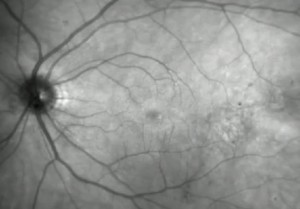What are eye floaters ?
Condensation or deposits in the vitreous jelly of eyes are referred to as eye floaters. It is a term that people use to describe and experience when they see floating spots in their sight while looking around. Individuals may be affected by eye floats in only one eye or both the eyes.
The lens and the cornea are present in the front potion of the eyes and help in the focus of light rays onto the retina. This enables the vision in people. The back of the eye has a jelly like material called vitreous humor. The light passes from the retina onto vitreous humor.
The gel is clear during birth and childhood. However, with the passage of time there is collection of liquid pockets, strands or deposits within the gel. Such stands cast a shadow on the retina which is perceived as floaters in the eye by affected individuals.
When one moves the eyes and shifts the focus, the deposits move as well, resulting in the movement of the shadows as well. Hence people have the feeling that there are floaters in the eye that are moving or undulating.
Floaters in the eye symptoms
- Floaters in the eye are visible in many forms such as C or O shaped blobs, curves or straight lines, spots and strings. Some individuals may experience only a single floater while others may see hundreds of them. The floaters in the eye that have the shape of lines may thin or thick or may sometimes have a branched appearance.
- Most floaters in the eye are dark grey in color and their density varies as per individual perceptions of the eye. Most often floaters in the eye are more visible under a bright sky or good lighting conditions. They are not visible in darkness and unlike flashes, do not appear when the eyes are shut.
- Also, the pattern of floaters in the eyes is dissimilar in different individuals just like fingerprints. In case of eye floaters in both eyes, the pattern in each eye will differ as well and tend to change over a period of time

Causes of floaters in the eye
- Any disorder of the eyes that compromises the clarity of the vitreous humor can result in symptoms of floaters in the eye. As people grow older some changes take place within the gel that leads to the development of liquefied gel within the firmer vitreous humor. Such a condition is called vitreous syneresis. The boundaries between such fluid pockets and the gel give the impression of eye floaters.
- Also, the collagen fibers become more dense and thick with old age of fifty and above, and this may also result in floaters in the eye. However, individuals differ when it comes to the degree of eye floaters affliction caused due to such changes within the eyes.
- With the onset of old age the vitreous humor also tends to shrink resulting in the forward movement of the back portion of the gel. This condition of the eye is called posterior vitreous separation or posterior vitreous detachment (PVD). The gel is attached to parts of optic nerve and such shrinkage results in the release of the attachments which float in the eye. This results in the formation of floaters in eye that are circular and unusually large. People with PVD in one eye are more likely to develop the condition in the other eye as well.
- Conditions such as an eye injury, diabetes, a tear of a blood vessel in the retina, retinopathy or eye surgery may result in hemorrhage or the red blood cells. Also, injuries, infections, uveitis or eye surgery may lead to inflammation of the vitreous humor. Such inflammation and hemorrhage can result in the deposition of cellular material in the eye causing floaters in the eye.
- Though eye floaters tend to affect older individuals, people who are diabetic or nearsighted, have eye cancers or medical conditions such as tuberculosis or have had eye injuries may get affected by floaters in the eye at a younger age.
Eye floaters treatment
- Most floaters decrease in darkness and size with time. This may happen due to the absorption of floaters by the natural processes of the eyes or due to the shift of the floaters which lead to diminished instances of shadows. Also, over time the brain and nerves adapt to the presence of floaters. This results in lowered distraction and bothers due to floaters in the eye.
- There are no safe ways to remove eye floaters and most of them fade away with time. However, there are certain eye floater solutions in the market as well as certain vitamins, herbs and iodine-containing products that have been marketed as effective solutions to the problem of eye floaters. Of these, eye floater solutions have been widely touted as a definite way to get rid of floaters in the eye. However, none of these medications or eye floater solutions has proven effective under clinical trials.
- Antibiotics or anti-inflammatory drugs may be used to treat eye floaters caused due to inflammation of white blood cells in the vitreous humor.
- Surgical removal of vitreous and/or the use of laser therapy to break up the eye floaters are other methods to treat floaters in the eye. However, such options must be exercised with caution and only after exhaustive consultation with doctors.